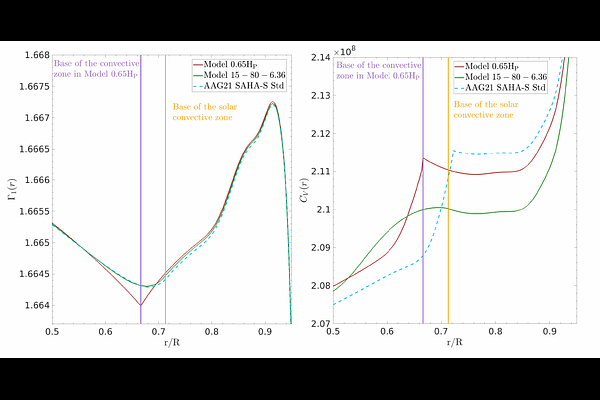Entropy proxy inversions as tracers of the evolution of physical conditions at the base of the solar convective envelope

Entropy proxy inversions as tracers of the evolution of physical conditions at the base of the solar convective envelope
G. Buldgen, A. Noels, V. A. Baturin, J. Christensen-Dalsgaard, S. V. Ayukov, A. V. Oreshina, R. Scuflaire
AbstractThe Sun is an important calibrator for the theory of stellar structure and evolution. However, the accuracy of our solar evolution models is tightly linked to the physical ingredients that enter their computations. This include, amongst other, the equation of state, the opacities, the transport of chemicals and the modelling of turbulent convection. Deriving model-independent probes of these ingredients is therefore crucial to further test the quality of these ingredients and potentially reveal their shortcomings using observational data. We aim at providing additional constraints on the thermodynamical properties of the solar plasma at the base of the solar convective zone using a revised helioseismic indicator mimicking the properties of the specific entropy in the envelope. We derive a revised entropy proxy for the solar convective envelope, directly accessible using helioseismic structure inversions. We then use solar evolutionary models with various modifications of input physics to study the properties of proxy of the entropy in the convective envelope. We find that the entropy proxy for the solar convective envelope allows to invalidate adiabatic overshooting as a solution to the solar modelling problem and strongly points towards the need for revised opacities. Our results show that this new indicator is a strong diagnostic of the overall evolution of the thermodynamical conditions at the base of the convective zone. The new entropy proxy indicator allows for a more accurate characterisation of the conditions at the base of the solar convective zone. While it already allows to rule out overshooting as a solution to the solar modelling problem, its sensitivity to the shape of the opacity modification and the evolution of the properties at the base of the convective zone makes it a powerful helioseismic diagnostic for solar models.